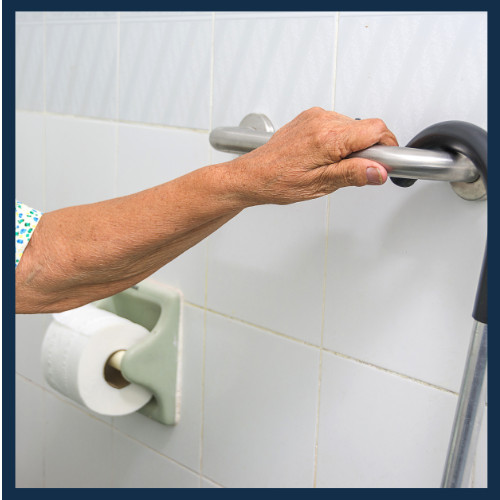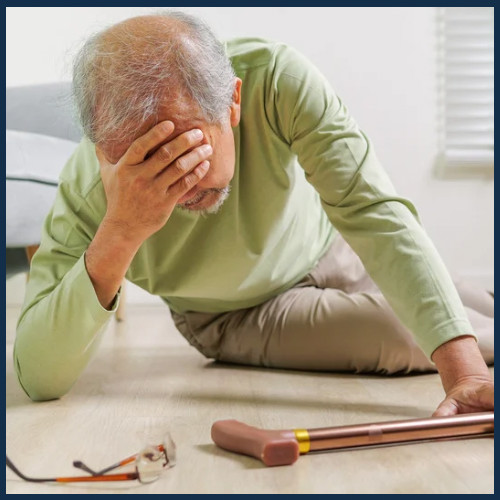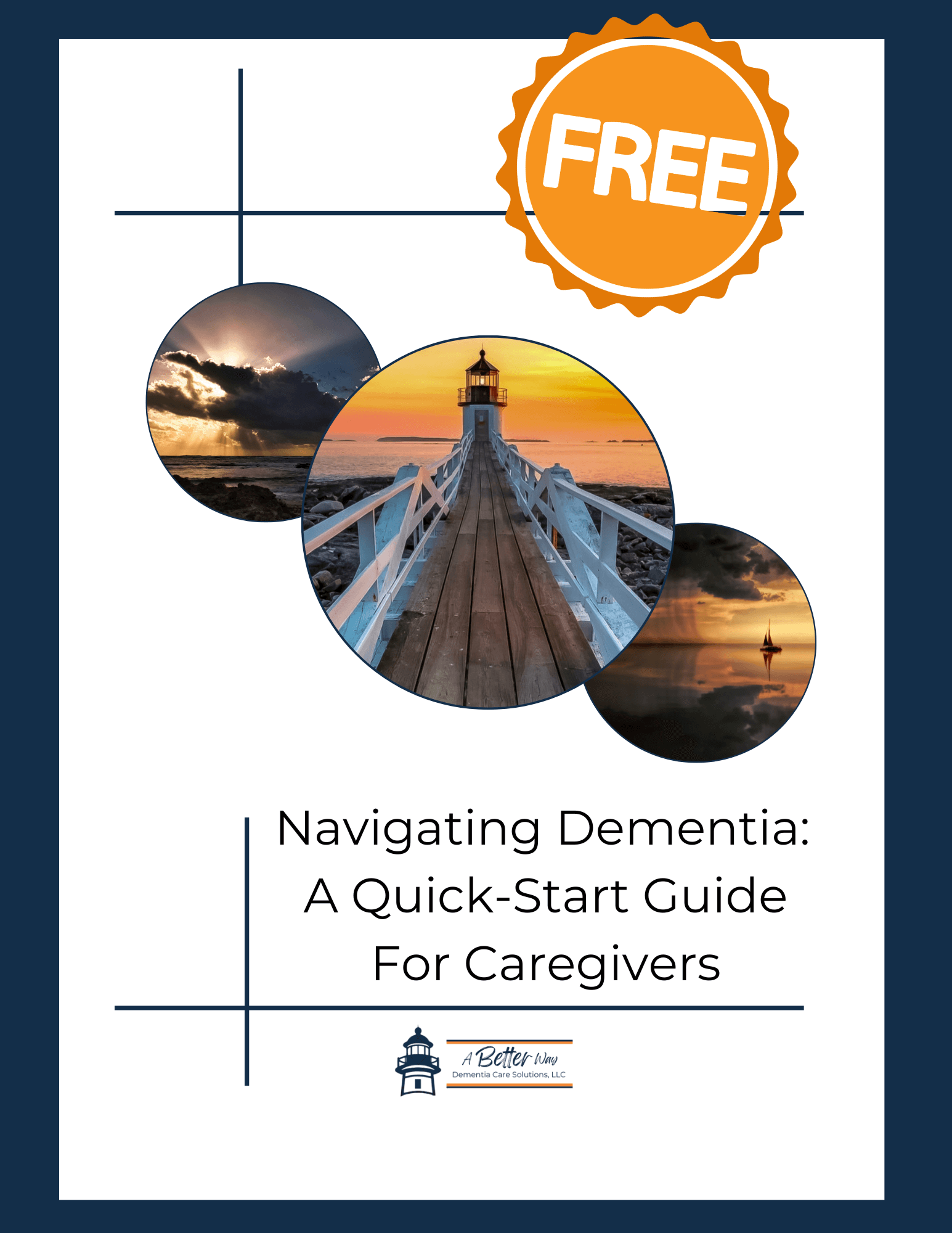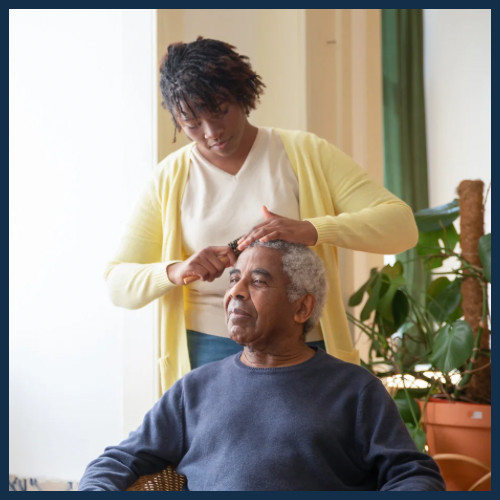
The bathroom is often considered one of the most dangerous rooms in the home for individuals with dementia. Its combination of slippery floors, water, and small spaces can increase the risk of falls significantly. However, with the right modifications and support from an occupational therapist (OT), it’s possible to create a safer, more accessible bathroom environment. An OT home assessment is an essential step in identifying specific needs and recommending personalized solutions to ensure bathroom safety.
In this post, we’ll explore the benefits of an OT home assessment and highlight key products that can help reduce the risk of falls in the bathroom.
Why an Occupational Therapy Home Assessment Matters
An OT home assessment is a crucial step in understanding how to modify the living environment for someone with dementia. During the assessment, the occupational therapist evaluates the person’s physical abilities, cognitive functioning, and the layout of the home. The bathroom, in particular, poses unique challenges, but an OT can identify specific risks and offer recommendations for assistive devices and layout changes.
Benefits of an OT Home Assessment for Bathroom Safety:
- Personalized Solutions: An OT can tailor their recommendations to fit the person’s specific needs, whether they need support standing, gripping, or moving safely.
- Improved Independence: With the right tools and modifications, individuals with dementia can maintain more independence in the bathroom, reducing stress for caregivers.
- Fall Prevention: Targeted recommendations, like installing grab bars or using non-slip mats, address the unique hazards of the bathroom.
Key Modifications for Bathroom Safety
Based on the OT’s assessment, here are some common modifications and tips to enhance bathroom safety for individuals with dementia:- Install Grab Bars:
Grab bars are essential for providing stability when getting in and out of the shower or standing up from the toilet. Make sure they’re securely installed near high-risk areas, such as the shower and toilet. - Use a Shower Chair:
A shower chair provides a stable seat, making bathing safer and less stressful. This reduces the risk of slips and allows the person you care for to shower more independently. - Add Non-Slip Mats:
Non-slip mats inside and outside the shower, as well as around the sink area, can drastically reduce the risk of slipping on wet surfaces. - Consider Raised Toilet Seats:
A raised toilet seat can make it easier to sit down and stand up, especially for individuals with limited mobility or balance issues. - Improve Lighting:
Bright, even lighting in the bathroom is crucial, especially during night-time trips to the bathroom. Consider motion-sensor lights to make the bathroom more accessible
- Install Grab Bars:
Practical Bathroom Safety Tips for Caregivers
- Keep the Bathroom Clutter-Free:
Make sure pathways are clear of any obstacles like towels or bath products that could lead to tripping. - Establish a Routine:
A consistent routine can reduce confusion and anxiety for the person you care for, especially when it comes to bathing and using the toilet. - Monitor Hydration and Medication:
Dehydration or certain medications can cause dizziness, increasing the risk of falls. Keep an eye on fluid intake and medication schedules.
Product Recommendations for Bathroom Safety
- Moen Home Care Grab Bar
- Secure and easy to install, this grab bar provides reliable support when entering or exiting the shower or standing from the toilet.
CHECK IT OUT ON AMAZON
- Secure and easy to install, this grab bar provides reliable support when entering or exiting the shower or standing from the toilet.
- Medline Shower Chair with Padded Armrests and Back
- This sturdy, adjustable-height shower chair ensures a comfortable and safe bathing experience for individuals who may struggle with balance or fatigue. CHECK IT OUT ON AMAZON
- This sturdy, adjustable-height shower chair ensures a comfortable and safe bathing experience for individuals who may struggle with balance or fatigue. CHECK IT OUT ON AMAZON
- Gorilla Grip Patented Bath Shower Mat
- This durable, non-slip mat provides extra grip in the shower to prevent dangerous slips and fall on slippery surfaces. CHECK IT OUT ON AMAZON
- This durable, non-slip mat provides extra grip in the shower to prevent dangerous slips and fall on slippery surfaces. CHECK IT OUT ON AMAZON
- Vive Raised Toilet Seat
- This raised seat makes sitting and standing from the toilet easier and more comfortable for those with mobility issues.
CHECK IT OUT ON AMAZON
- This raised seat makes sitting and standing from the toilet easier and more comfortable for those with mobility issues.
- AMIR Motion Sensor Light
- Perfect for bathroom use, this motion-sensor light activates instantly, providing bright light when it’s needed most, especially during nighttime trips.
CHECK IT OUT ON AMAZON
- Perfect for bathroom use, this motion-sensor light activates instantly, providing bright light when it’s needed most, especially during nighttime trips.
Affiliate Disclosure
A Better Way - Dementia Care Solutions, LLC participates in the Amazon Associates Program, which means we earn a small commission when you buy through links on our site, at no extra cost to you. We only recommend products that we believe can help caregivers on their journey.
Conclusion
Bathroom safety is critical for preventing falls and maintaining the independence of individuals with dementia. An OT home assessment offers invaluable insights, providing personalized recommendations that can make a huge difference in bathroom safety. By adding the right modifications, such as grab bars, non-slip mats, and a raised toilet seat, you can reduce the risk of falls and create a safer, more accessible bathroom environment for the person you care for.
Call to Action:
For more helpful tips on dementia caregiving, subscribe to our newsletter and download a free e-book on navigating the doctor’s office with the person you care for!
For more helpful tips on dementia caregiving, subscribe to our newsletter and download a free e-book on navigating the doctor’s office with the person you care for!
Disclaimer: The information provided in this blog is for educational purposes only and should not be considered medical advice. Always consult with a doctor or a licensed occupational therapist before starting any new exercise routine, using assistive devices, or following the recommendations mentioned. Every individual’s needs are different, and professional guidance is essential to ensure safety and appropriateness of care.
Want to keep figuring this out together?
Subscribe to Finding Our Way in Dementia Care and get honest stories, helpful tips, and gentle support delivered to your inbox every week. Just real talk, grounded care, and space to breathe.
Subscribe to Finding Our Way in Dementia Care and get honest stories, helpful tips, and gentle support delivered to your inbox every week. Just real talk, grounded care, and space to breathe.
Kind truth. Clear steps. Warm guide.
















0 Comments